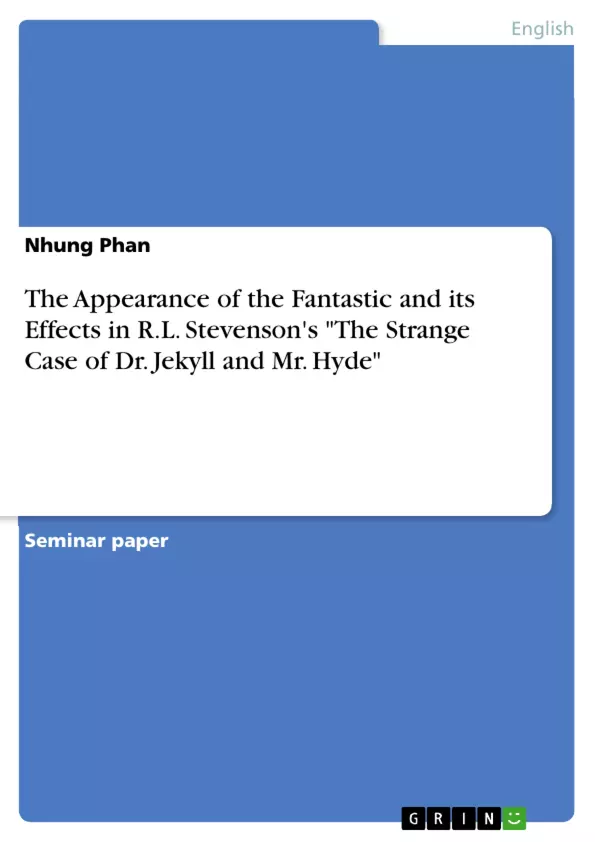In her work The Fear of the Other, Schmidt analyses, inter alia, the motif of the Double as well as its appearance in 19th Century literature in the Gothic tradition. The quotation above expresses the definition of the double-ganger, also described as the wrong self, which is connected with antithetic values opposed to the prototype. Schmidt utilises the expressions such as ‘First Self’ for demonstrating the protagonist and ‘Second Self’ which designates the definition of the dark half or rather the alter ego. While describing the divided self and explaining the relationship between good and evil of the double-ganger, Schmidt rather focuses on the ‘Second Self” and its multiple denotation, as “the Second Selves make their appearances either as instinct shadowlike figures, coming alive in the form of pictures or reversed as mirror images” (Schmid The Fear of the Other).
These aforementioned double-ganger motifs are literary represented in a plethora of English narrations in both English Romanticism and in early 20th Century literature in the Gothic tradition. As social and personal identity crises were augmentative during the Romantic epoch, the literary double “serves to express an epoch’s fear of the collapse of social values”, therefore authors used the double motif in literature in order to “illustrate the issue of the fragmentability of the human soul” (36). While split personality was a feature of the prototype of a double-ganger in the Gothic genre, “the Second Self mostly contains aspects of the demonic, (…), the monstrous, (…) and is bound into a context of moral ambiguity” (ebda). These features demonstrate the “Second Self” as a diabolical alter ego, who always appears as a self-divided villain, marked by the uncanny and the evil.
Inhaltsverzeichnis (Table of Contents)
- Introduction
- Significance of Narrative Situation in The Strange Case of Dr. Jekyll and Mr. Hyde
- The Effect on the Reader
- Reliability
- The Uncanny Effect of the Fantastic in The Strange Case of Dr. Jekyll and Mr. Hyde
- Linguistic Features and Allegories
- Symbolism of Names
- Conclusion
- Works Cited
Zielsetzung und Themenschwerpunkte (Objectives and Key Themes)
The paper aims to explore the effects of the Fantastic in Robert Louis Stevenson's *The Strange Case of Dr. Jekyll and Mr. Hyde* through the analysis of narrative situation, linguistic features, and symbolism. The paper focuses on the significance of the double-ganger motif and the uncanny effect created through the narrative structure and language choices.
- The significance of the double-ganger motif in 19th-century literature
- The influence of narrative situation on reader perception and the creation of suspense
- The role of linguistic features and symbolism in enhancing the uncanny effect of the Fantastic
- The exploration of moral ambiguity and the fragmentation of the human soul
Zusammenfassung der Kapitel (Chapter Summaries)
The introduction provides a framework for the paper by discussing the concept of the double-ganger and its representation in 19th-century literature, particularly in the Gothic tradition. It introduces the key ideas of self-destruction, the split personality, and the representation of good and evil. The paper then focuses on Stevenson's *The Strange Case of Dr. Jekyll and Mr. Hyde* as a prime example of the double-ganger motif in literature.
The second chapter examines the narrative structure of the novel and its impact on the reader. The author analyzes how the multiple narrations, through the perspectives of Utterson, Enfield, Lanyon, and Jekyll, contribute to the creation of suspense and ambiguity. The chapter also highlights the importance of the first-person narrative and its role in immersing the reader in the story.
The third chapter delves into the uncanny effect created by the Fantastic in Stevenson's novel. It analyzes linguistic features such as word choice, imagery, and symbolism to demonstrate how Stevenson manipulates language to amplify the sense of the uncanny. The chapter also explores the symbolic representation of names and their contribution to the overall theme of the text.
Schlüsselwörter (Keywords)
Key keywords and focus topics in the text include the double-ganger, the uncanny, narrative situation, linguistic features, symbolism, Gothic tradition, split personality, moral ambiguity, and the fragmentation of the human soul.
- Arbeit zitieren
- Nhung Phan (Autor:in), 2013, The Appearance of the Fantastic and its Effects in R.L. Stevenson's "The Strange Case of Dr. Jekyll and Mr. Hyde", München, GRIN Verlag, https://www.grin.com/document/424630



